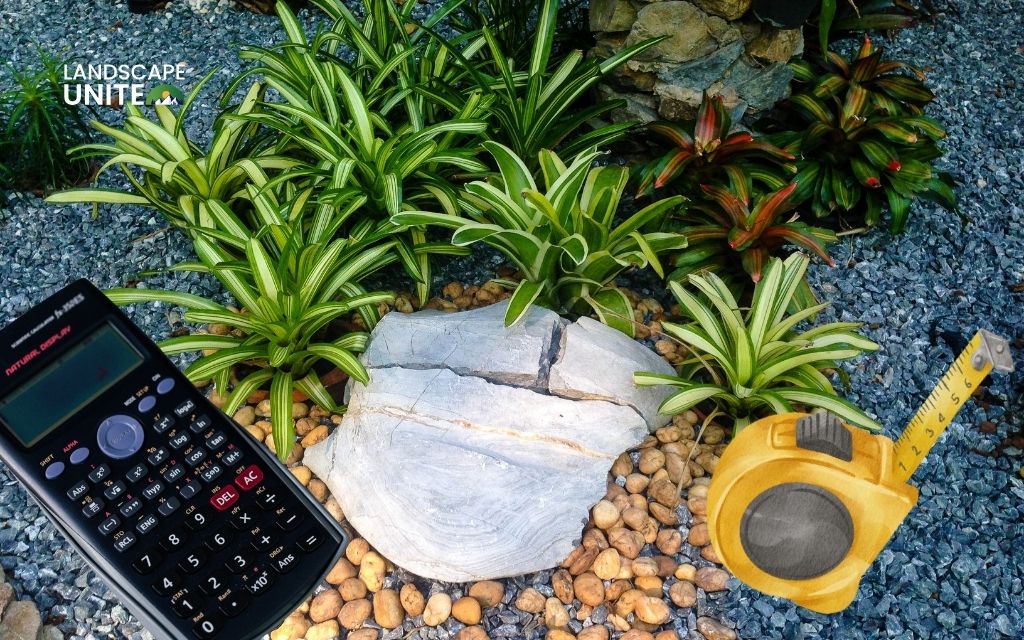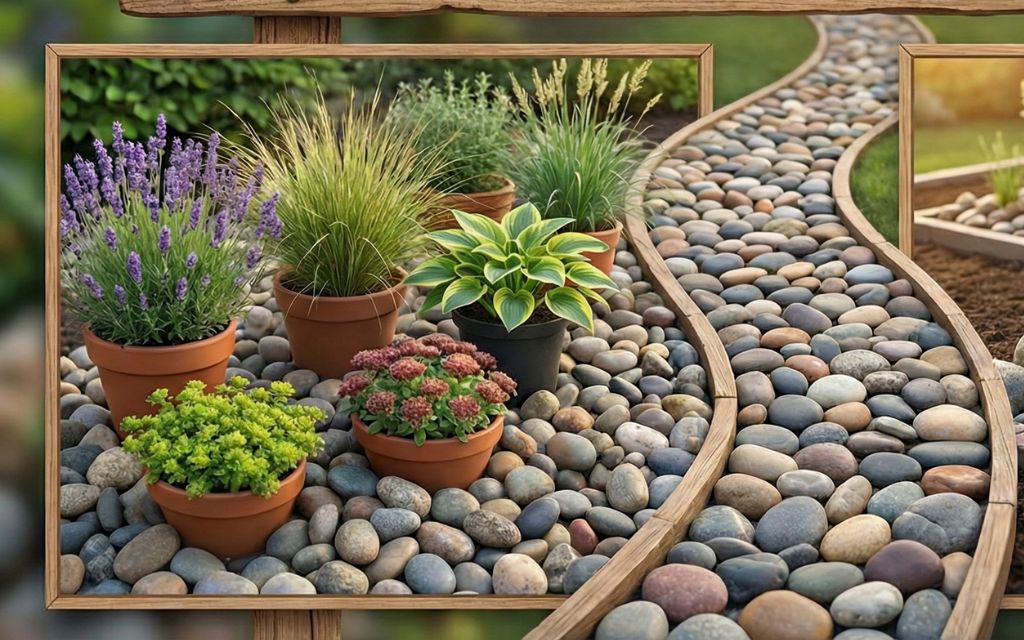Choosing the right lawn solution for your property is a significant decision that affects your home’s curb appeal, maintenance routine, and long-term budget.
The debate between turf vs artificial grass has become increasingly relevant as homeowners seek alternatives that balance aesthetics, sustainability, and practicality.
Whether you’re dealing with water restrictions, heavy foot traffic, or simply want to reduce weekend lawn care, understanding the difference between turf and artificial grass will help you make the best choice for your specific situation.
Keep reading to learn more about the comprehensive comparison that will guide your decision-making process.
What is turf vs artificial grass?
Before diving into the detailed comparison, it’s essential to understand what we’re actually comparing. The terms “turf” and “artificial grass” represent two different approaches to creating green outdoor spaces, each with distinct characteristics and requirements.
What is natural turf (natural grass)?
Natural grass is a living ecosystem of grass plants, roots, and soil that requires water, nutrients, and sunlight to thrive. It’s grown from seeds or installed as sod and maintained through regular care practices.
The most common varieties include:
- Kentucky Bluegrass (ideal for cooler climates)
- Bermuda grass (thrives in warm, sunny areas)
- Fescue (drought-tolerant and versatile)
- St. Augustine grass (popular in southern states)
- Zoysia grass (slow-growing but durable)
Each variety has specific climate requirements and maintenance needs.
Natural turf demands consistent attention throughout the growing season. This includes regular watering (typically 1-1.5 inches per week), weekly mowing during peak growth periods, seasonal fertilization to provide essential nutrients,…
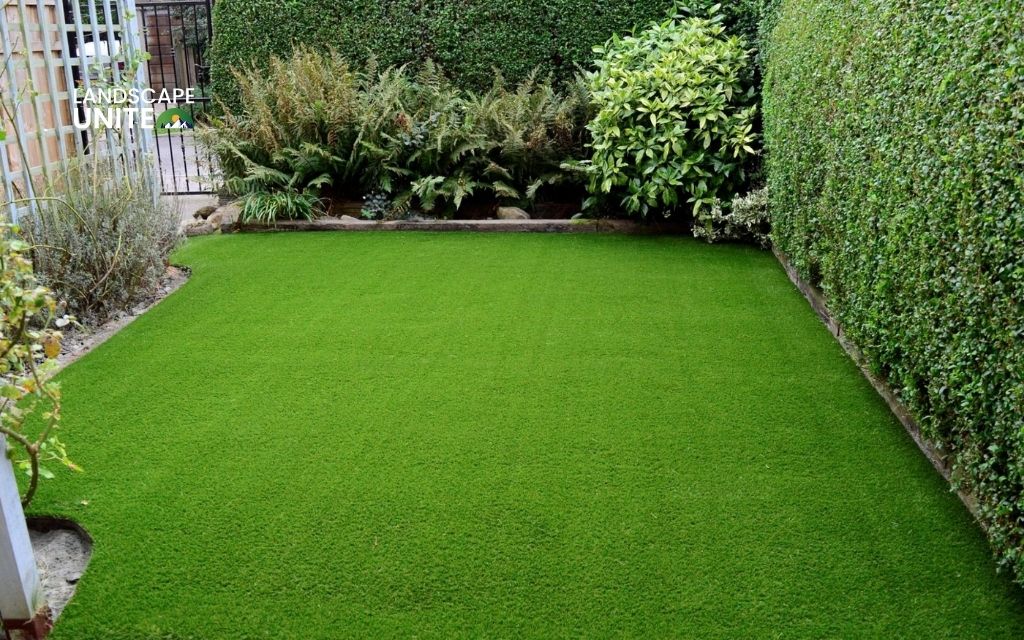
What is artificial grass (synthetic turf)?
Artificial grass, also known as synthetic turf, is a manufactured surface designed to replicate the appearance and feel of natural grass without the biological requirements.
Modern artificial grass typically uses polyethylene fibers for a soft, realistic feel, polypropylene for durability in high-traffic areas, or nylon for maximum resilience in extreme conditions.
The backing is usually made from polyurethane or latex, while infill materials can include silica sand, rubber granules, or organic alternatives like cork or coconut fibers.
Discover how you can install fake grass in your yard in this guide.
Key differences between turf and artificial grass
Understanding the practical differences between these 2 options helps you evaluate which solution aligns with your lifestyle, budget, and property requirements. Let’s examine the major distinctions across several critical categories.
1. Maintenance requirements
The most significant difference between turf and artificial grass lies in their ongoing maintenance demands, which directly impact your time investment and long-term costs.
| Maintenance Task | Natural Turf | Artificial Grass |
| Mowing | Weekly (every 1-2 weeks during growing season) | None required |
| Watering | Regular watering (1-1.5 inches per week) | None required |
| Fertilization | 3-4 times annually with specialized products | None required |
| Weed Control | Regular herbicide application and manual removal | Minimal – occasional spot treatment |
| Pest Control | Ongoing treatments for grubs, insects, and diseases | None required |
| Cleaning | Raking leaves and debris removal | Occasional brushing and debris removal |
| Time Investment | 2-4 hours weekly during growing season | 1-2 hours monthly |
| Seasonal Care | Winterization, spring preparation, summer stress management | Year-round consistent appearance |
2. Water usage
Water consumption represents both an environmental consideration and a significant ongoing expense, particularly in drought-prone regions across the United States.
| Water Usage Factor | Natural Turf | Artificial Grass |
| Weekly Water Need | 1-1.5 inches (623 gallons per 1,000 sq ft) | Zero water required |
| Annual Water Consumption | ~32,000 gallons per 1,000 sq ft | Zero consumption |
| Water Bill Impact | $200 – $800 annually for average lawn | No water costs |
| Drought Impact | Requires daily watering or grass dies | Unaffected by drought conditions |
| Environmental Impact | Contributes to regional water shortages | Saves ~55,000 gallons annually per 1,000 sq ft |
3. Durability and lifespan
The longevity and resilience of your lawn choice affect both satisfaction and long-term value, especially in areas with heavy use or challenging weather conditions.
Natural turf:
Wear and tear challenges include brown patches from heavy foot traffic, damage from pet waste, bare spots from drought stress, and seasonal dormancy that leaves grass brown during winter months in many climates.
Lifespan considerations involve understanding that natural grass requires periodic overseeding, occasional replanting of damaged areas, and potential complete renovation every 10-15 years depending on maintenance quality and environmental stress.
Artificial grass:
High durability means synthetic turf withstands heavy foot traffic, pet use, and weather extremes without showing wear patterns. Quality artificial grass maintains its appearance consistently throughout all seasons.
Lifespan expectations range from 15-25 years for residential installations, depending on product quality, installation standards, and usage intensity. Higher-end products often come with warranties reflecting their expected longevity.
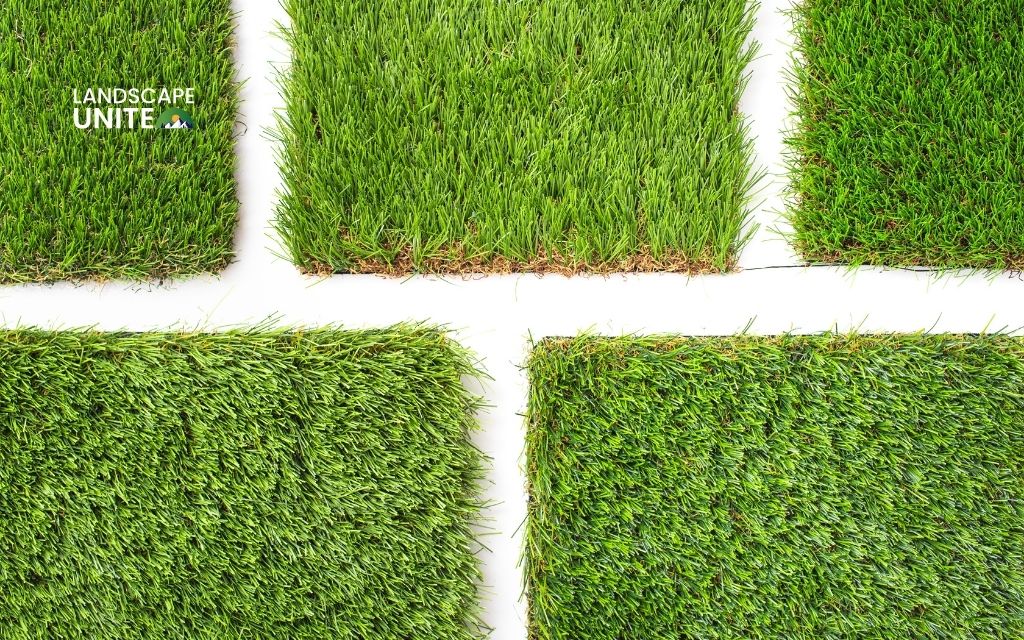
4. Environmental impact
Environmental considerations have become increasingly important for American homeowners, influencing decisions about lawn care and landscaping choices.
Natural turf:
Chemical usage concerns include fertilizers that can contribute to water pollution through runoff, pesticides that may affect beneficial insects and local wildlife, and herbicides used for weed control that can impact soil health.
Water consumption impact extends to municipal water systems and regional water supplies, particularly during drought conditions when lawn irrigation restrictions become common.
Artificial grass:
Eco-friendly advantages include elimination of chemical fertilizers and pesticides, significant water conservation, and reduction in carbon emissions from lawn mowing equipment.
Production considerations involve understanding that synthetic materials require energy-intensive manufacturing processes and are typically made from petroleum-based products.
However, many manufacturers now offer recyclable options and use recycled materials in production.
Cost comparison: turf vs artificial grass
Financial considerations often drive the final decision between natural and artificial grass. Understanding both upfront and ongoing costs provides a complete picture of each option’s economic impact.
Initial installation cost
The upfront investment varies significantly between natural turf and artificial grass, reflecting their different installation requirements and material costs.
Natural turf:
Cost range for sod installation typically falls between $1 – $3 per square foot, making it the more affordable initial option for most homeowners. Seed installation costs even less, ranging from $0.5 – $1.50 per square foot.
Additional costs may include soil preparation and amendment ($0.5 – $2 per square foot), irrigation system installation ($1 – $3 per square foot), and initial lawn care equipment purchases ($500 – $2,000 depending on lawn size and equipment quality).
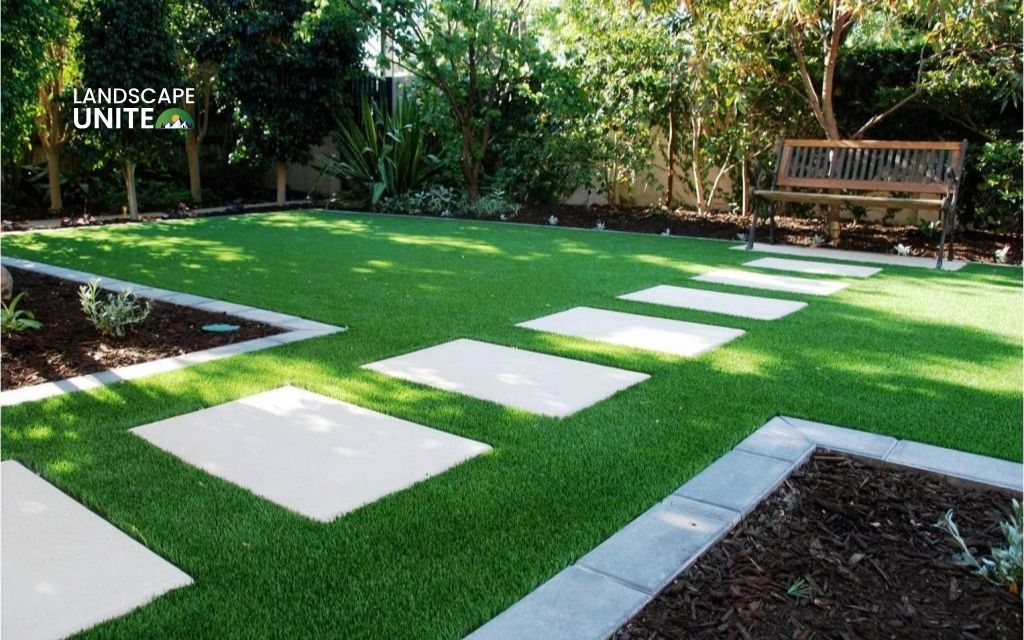
Artificial grass:
Fake grass installation cost range spans $4 – $15 per square foot installed, with variation based on product quality, installation complexity, and regional labor costs. Premium products with advanced features like cooling technology or antimicrobial treatments command higher prices.
Installation complexity affects pricing, with factors including site preparation requirements, drainage considerations, accessibility challenges, and custom cutting needs all potentially increasing costs.
| Cost Factor | Natural Turf | Artificial Grass |
| Material Cost per sq ft | $1 – $3 (sod) / $0.50 – $1.50 (seed) | $4 – $15 depending on quality |
| Soil Preparation | $0.50 – $2 per sq ft | Included in installation |
| Installation Labor | $1 – $2 per sq ft | $2 – $5 per sq ft |
| Irrigation System | $1 – $3 per sq ft (optional but recommended) | Not required |
| Equipment Needed | $500 – $2,000 (mower, tools) | None required |
| Total Initial Investment | $3 – $10 per sq ft | $6 – $20 per sq ft |
Long-term maintenance costs
Ongoing expenses reveal the true cost difference between these lawn options over time, often making the initial price differential less significant.
Natural turf:
Annual maintenance costs typically range from $500 – $2,000 for average-sized lawns, depending on climate, grass type, and maintenance intensity.
This includes water bills ( $200 – $800 annually), fertilizer and chemicals ($100 – $300), equipment maintenance and fuel ($100 – $400), and professional services if outsourced ($1,000 – $3,000 annually).
Artificial grass:
Ongoing costs remain minimal, typically ranging from $100 – $300 annually for cleaning supplies, occasional professional cleaning services, and minor repairs or infill replenishment. The absence of water, fertilizer, and mowing costs creates substantial long-term savings.
| Maintenance Item | Natural Turf | Artificial Grass |
| Water Bills | $200 – $800 | $0 |
| Fertilizer & Chemicals | $100 – $300 | $0 |
| Equipment & Fuel | $100 – $400 | $0 |
| Professional Services | $1,000 – $3,000 (if outsourced) | $0 – $200 (occasional cleaning) |
| Repairs & Replacement | $200 – $500 (overseeding, replanting) | $50 – $150 (minor repairs) |
| Total Annual Cost | $500 – $2,000 (DIY) / $1,500-$4,500 (professional) | $100 – $300 |
Conclusion
The choice between artificial grass and natural turf depends on your priorities, budget, and lifestyle preferences. Natural turf suits homeowners who enjoy gardening, have adequate water resources, and prefer traditional landscaping.
Artificial grass works best for busy lifestyles, drought-prone areas, pet owners, and those seeking long-term cost efficiency.
Ready to transform your outdoor space?
Discover comprehensive artificial grass installation guides, landscaping design ideas, and expert solutions in our resource center to create the perfect lawn for your needs.
Frequently asked questions (FAQs)
Which is better for pets: artificial grass or natural grass?
Artificial grass is typically better for pets due to superior durability against digging and wear, easier cleanup after pet waste, and no bare spots from urine damage. However, consider your pet’s preferences for natural textures.
Does artificial grass get too hot in the summer?
Quality artificial grass can become 10-20 degrees warmer than natural grass in direct sunlight. Choose products with cooling technology or hose down the surface during peak heat to maintain comfortable temperatures.
How long does artificial grass last?
High-quality artificial grass lasts 15-25 years with proper installation and maintenance. Most manufacturers offer 8-15 year warranties reflecting product durability expectations.
Can I install artificial grass myself?
DIY installation is possible for small areas, but professional installation is recommended for optimal results. Proper base preparation, drainage, and seaming require specialized knowledge and tools.
What are the environmental impacts of artificial grass?
Artificial grass saves significant water and eliminates chemical fertilizers/pesticides. However, it’s made from synthetic materials requiring energy-intensive production. The net environmental benefit depends on your location and current lawn care practices.
